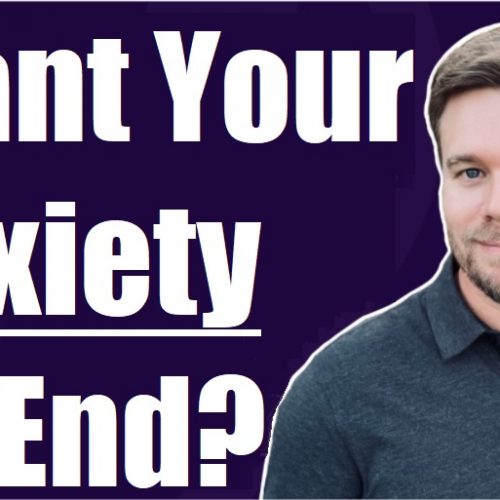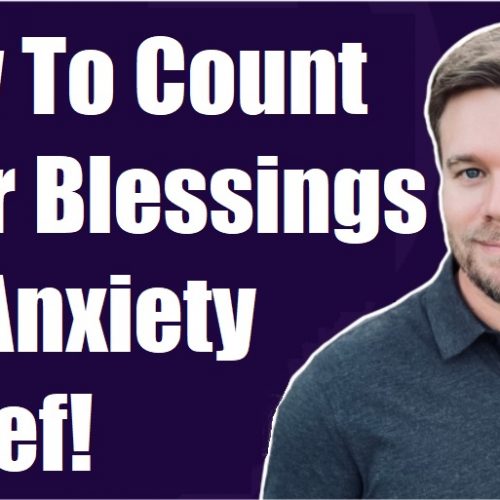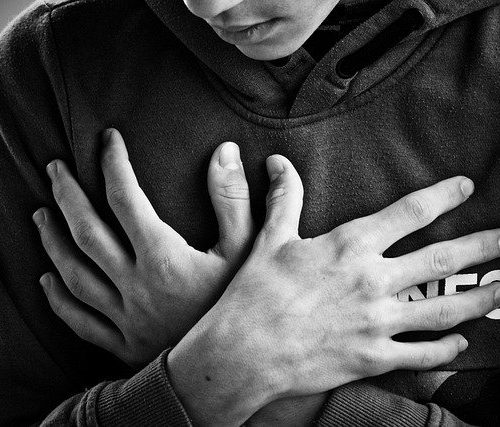There’s a good reason why breathing techniques can be so influential and powerful to help manage and stop anxiety.
One reason is that your breathing is the only aspect of your physiology that you can consciously control with ease.
For Example, You Can’t:
● Alter your digestion.
● Change your blood pressure.
● Decide where your body is going to store fat.
● Alter the level of hormones in your blood.
But you can control your breathing.
You can breathe faster, slower, deeply, or shallowly. You can change your breathing at will.
However, you just can’t say to yourself, “I’m going to reduce my blood pressure by 10 points,” and make it happen in real time.
How Can Breathing Help With Anxiety?
Your breathing has a great effect on your physiology.
Using the power of your breath can be a surprisingly effective way of managing your anxiety.
Best of all, it’s free and always available to you no matter where you are or what is going on around you.
Follow these strategies to use breathing to manage your anxiety:
- Equal breathing.
This technique has been around for thousands of years in various yoga traditions. Here’s how you do it:
● Close your eyes and evaluate your normal breathing pattern. Notice how many seconds you spend breathing in and how long you spend breathing out. Do this for one minute.
● Now, slowly count from 1-4 as you inhale through your nose. It’s fine to breathe through your mouth if your nose is stuffy.
● Exhale for the same 1-4 count.
● Neither your inhalations or exhalations should be overly full. Just breathe comfortable, full breaths.
● Keep the counts of your inhalations and exhalations the same. You can use a timer like the one on most phones. Repeat for 5-10 minutes or as long as needed.
- The Long exhale.
This is a great breathing technique if you’re feeling panicked. It’s a very effective way to combat the effects of hyperventilation.
● Part 1: Extend your exhalations for as long as you can. Try to squeeze out as much air as possible without making yourself miserable.
● Then, relax and allow your lungs to naturally fill with air. You can do this by simply relaxing. It’s not necessary to actively inhale. If you’ve exhaled completely as I described above, your lungs will fill with air if you just relax. Continue for five full minutes.
● After five minutes have passed, try this next exercise for an additional five minutes:
● Part 2: Exhale for twice as long as you inhale. Three seconds in, and six seconds out is a good starting point. Try longer and shorter timeframes and see what effect it has.
- Belly breathing.
This is one of the more popular breathing techniques to enhance feelings of wellbeing.
● Lie down and put one or both hands on your belly. Some people allow the tips of their index fingers to rest in the indention of their belly button.
● Take a full, deep breath (you’ll feel your belly rise) and hold it for a short period of time. How long is up to you. Start with just a count of four and extend it as you see fit.
● Relax and allow your body to naturally expel the air. You’re not intending to exhale. You’re just relaxing and allowing nature to take its course.
● Pause again for as long as you like.
● Repeat. Again, 5-10 minutes is sufficient, but you can always go longer if you like.
- Alternate nostril breathing.
This is another yoga technique that people seem to either love or hate. It’s a little more complicated, so it can be distracting. This is great if you need a distraction from your anxiety that can also have some of the calming impacts of other breathing techniques.
● Breathe normally, but only use one nostril at a time. You can do this by gently placing your finger over one nostril, and then inhale and exhale through the other nostril.
● After you complete one breath cycle, close off your other nostril and repeat the process with the other side.
● This process can be combined with any other breathing technique. Play around with it and see what works for you.
Deep, Consistent Breathing Calms Anxiety
When using the techniques listed above it’s important that you breathe deeply and fully.
When you do that, your body stays calm. You may still be a bit tense, but your relaxed, deep, and steady breathing can protect you from an anxiety attack happening or calm one to the point of being manageable.
In an anxiety attack, you may have a tendency to hyperventilate, which increases the level of panic you experience. However, deep breathing keeps you in control and has a calming impact on anxiousness.
When you hyperventilate, you take short, quick breaths in mostly the top part of your lungs. Your chest expands, but you aren’t getting the full amount of air that you need to remain calm. The speed that you breathe can also cause an alarmed response from your system.
Shallow breathing makes your apprehension and panic even worse. It becomes a cycle that can be hard to break without practice. I’ll help you with that below.
The Most Beneficial Way To Breathe
Any time you can concentrate on breathing fully – all the way down to your abdomen – you’ll improve your relaxation response to stressful situations.
If your chest is rising with each breath, you’re not expanding your lungs to full capacity. When that happens, your body can lack the oxygen it needs to thrive under the pressure of the moment.
Place a hand just above your belly button and breathe as described above with slow, deep breaths that fill your belly, causing it to expand and rise. If you are breathing deeply, your hand will rise and fall with each breath.
Take your time.
Practice breathing slowly by taking full and deep breaths. You might feel a bit strange at first because you’re not used to it since most of us typically breathe in a shallow way.
You may even have a bit of a euphoric sensation as you start to breathe correctly since you are getting more oxygen than you are used to.
Breathing slowly and fully instead of quickly and shallowly can make it seem like you aren’t getting enough air quickly enough.
Don’t worry, by practicing deep breathing you are getting plenty of air, even if you don’t feel like you are. Be patient. Your lungs can expand without your upper chest rising. You will likely get used to it and start to embrace it.
Only your belly needs to rise and fall for the most part. At first, you probably won’t breathe this way unless you’re thinking specifically about it because you’re so conditioned to breathe from your chest right now. Keep practicing often, and you’ll soon be breathing properly most or all of the time.
How Breathing Affects Anxiety
Regardless of what causes you to feel anxious, the most important thing is to alleviate it and reduce the degree to which it affects your life. Anxiety doesn’t have to stop you from living the life you deserve!
By lowering your anxiety, you may be able to:
• Change careers or get promoted
• Speak in front of others without fear
• Travel to places you’ve always wanted to see
• Embark on a new relationship or business venture
• Reduce your dependency on medication or therapy
If you’re contemplating reducing any medication or therapy you’re currently using, consult your physician before making any changes to your established regimen. But you can still start receiving the benefits of deep breathing right away.
There are no negative side effects since this type of breathing is natural and healthy. And it’s something that everyone can learn and benefit from.
If you struggle with worry or anxiety, you can feel more relaxed and in control by simply controlling your breathing. Begin practicing deep breathing strategies today and experience peace in the midst of the storms of your life!
These are just a few examples of breathing techniques that can be utilized to minimize anxiety.
How you breathe can have a powerful effect on your body and your emotions. Learn how to use your breath to your advantage by applying the instructions in this article to your life. The answer to your anxiety might already be within you.
Sincerely,
Coach Lee | Subscribe on YouTube



